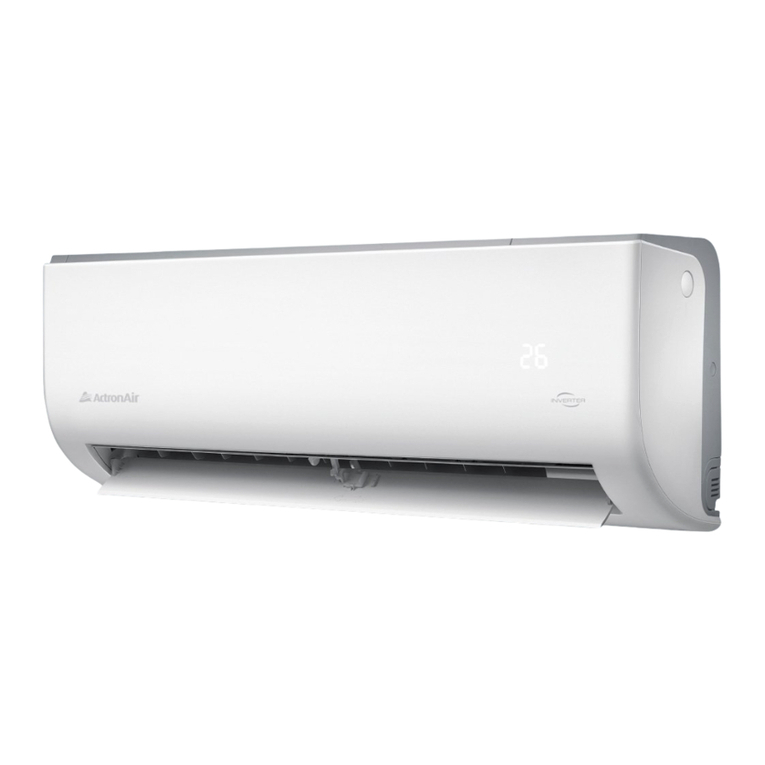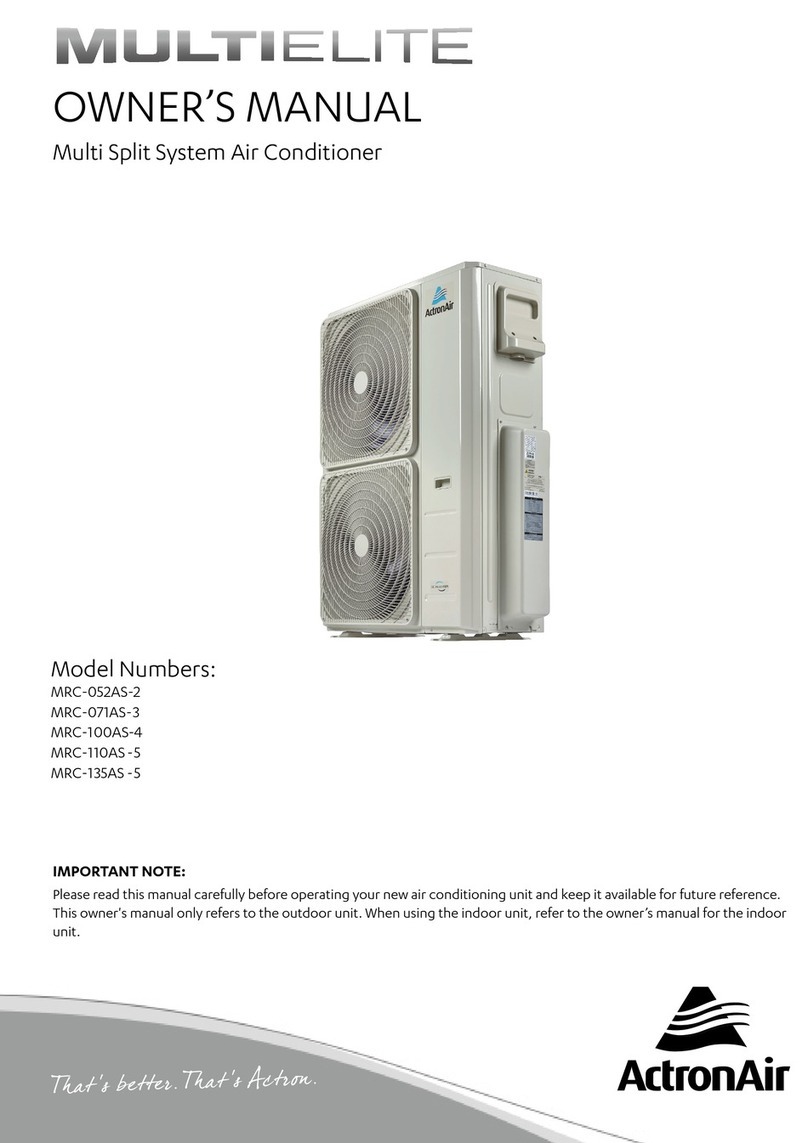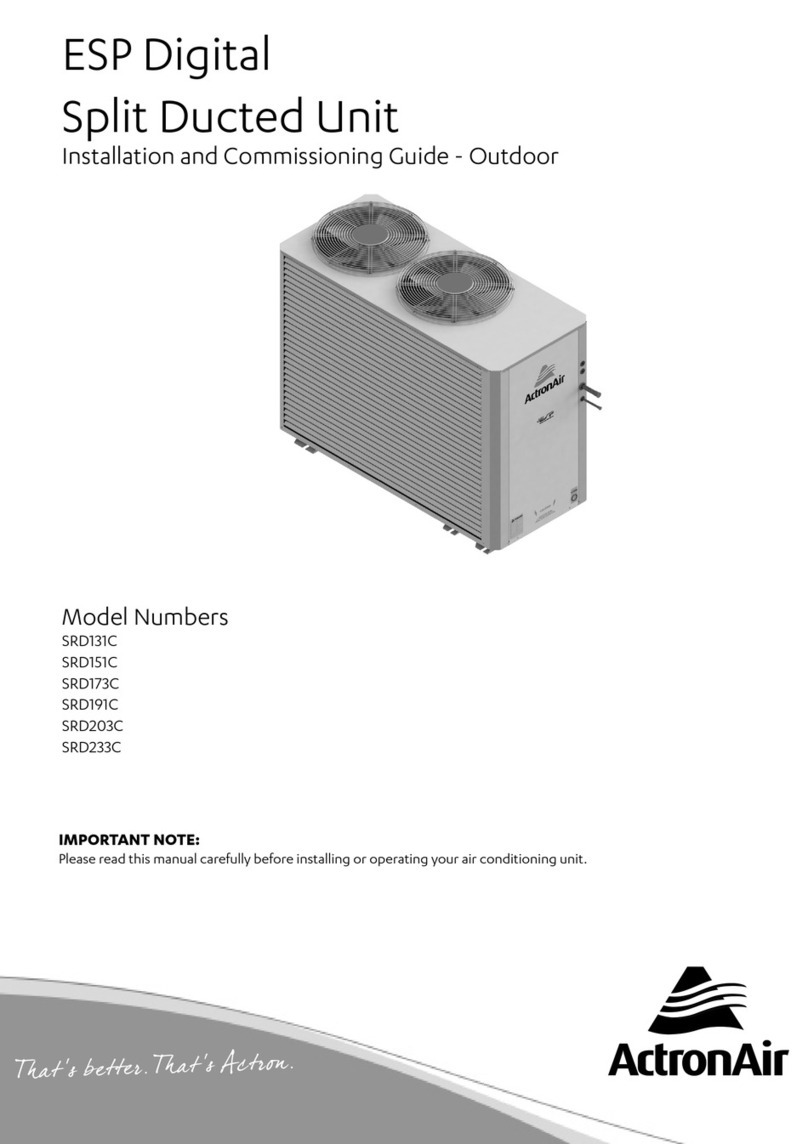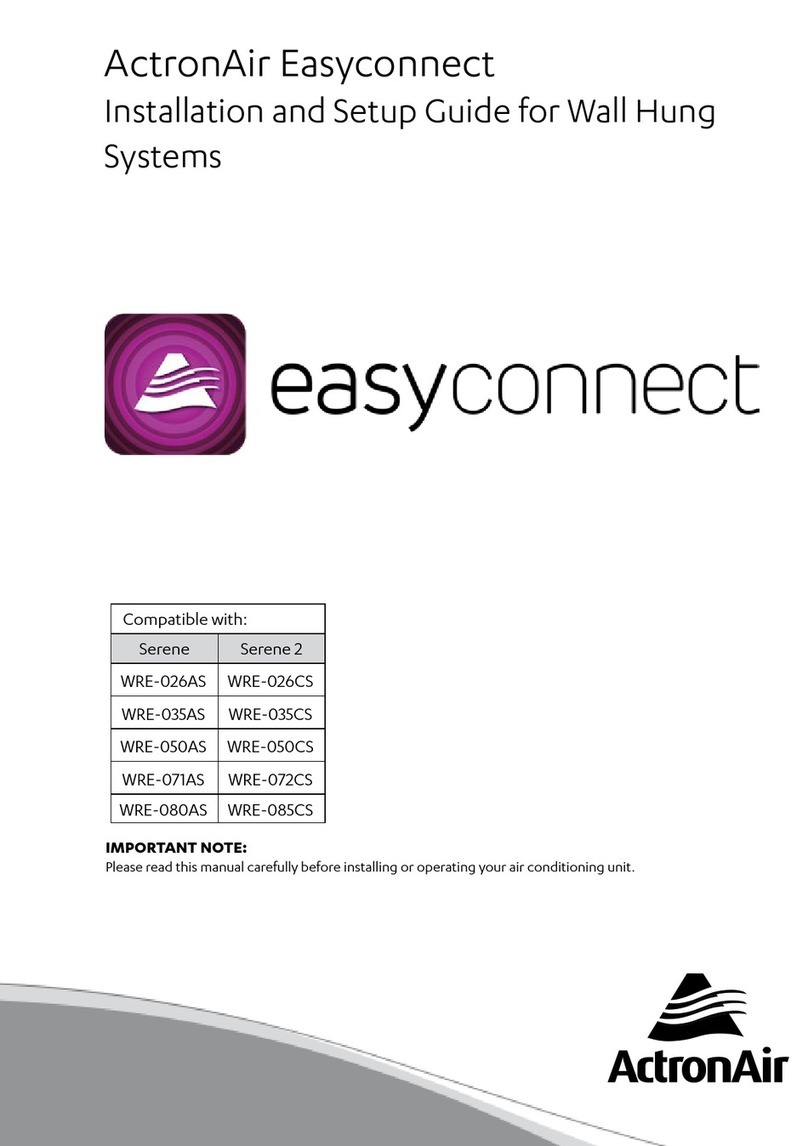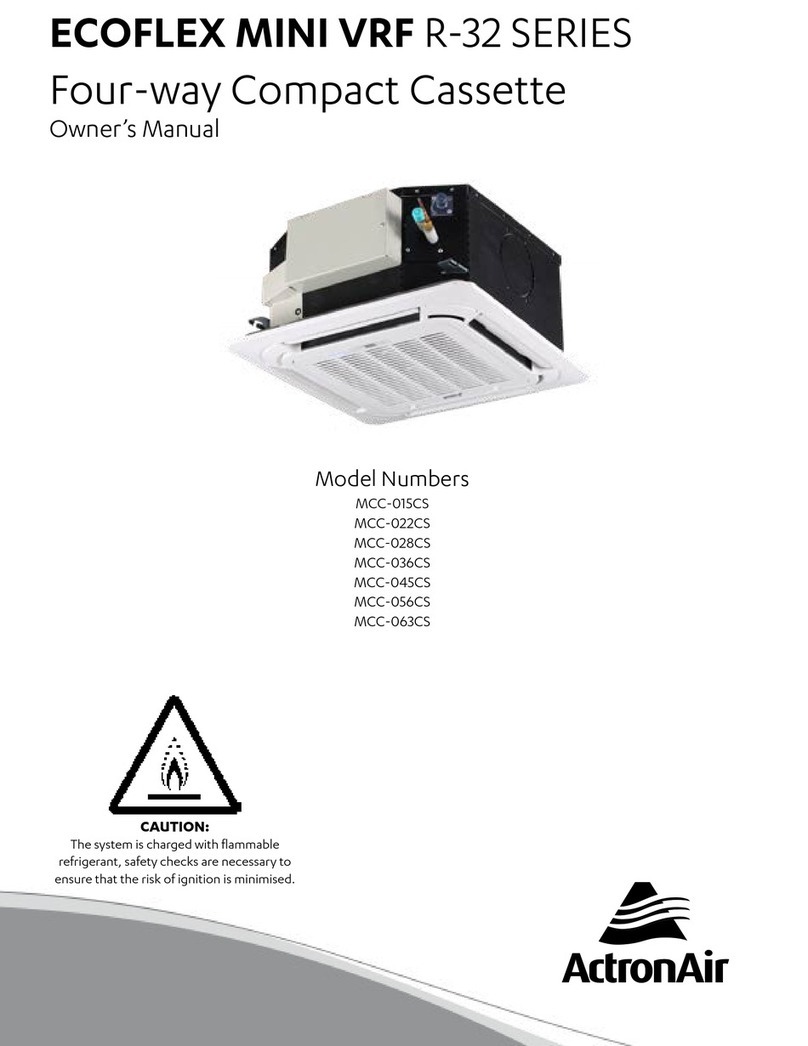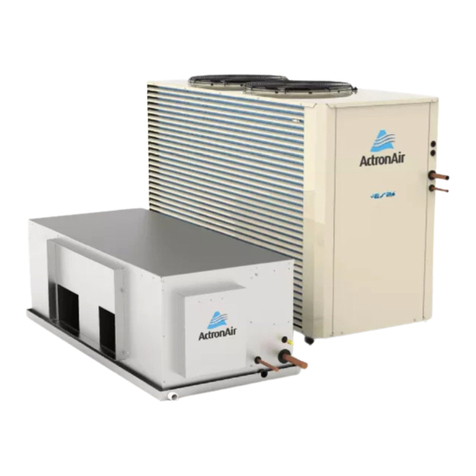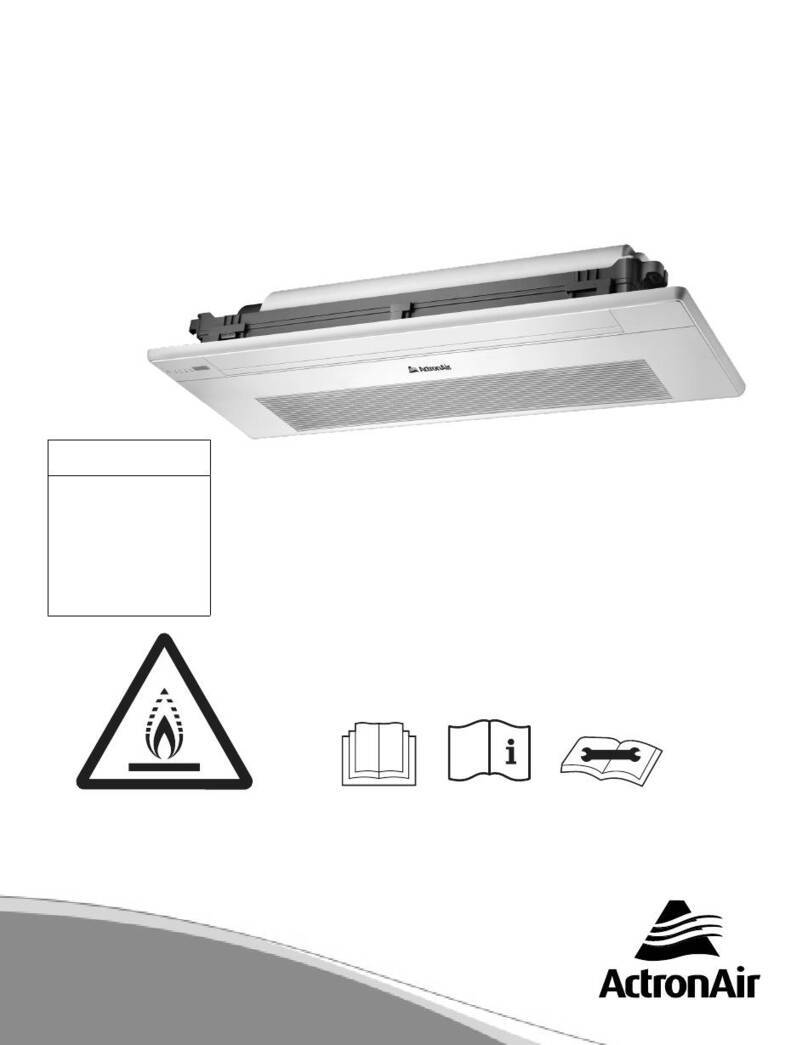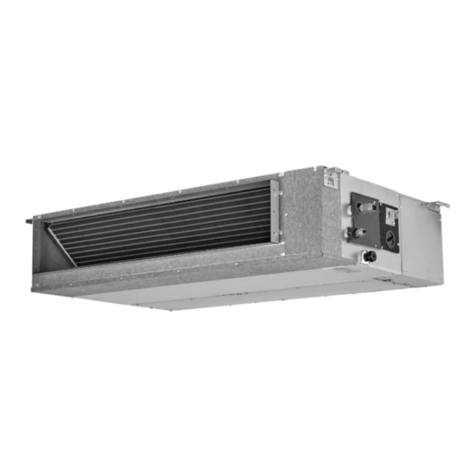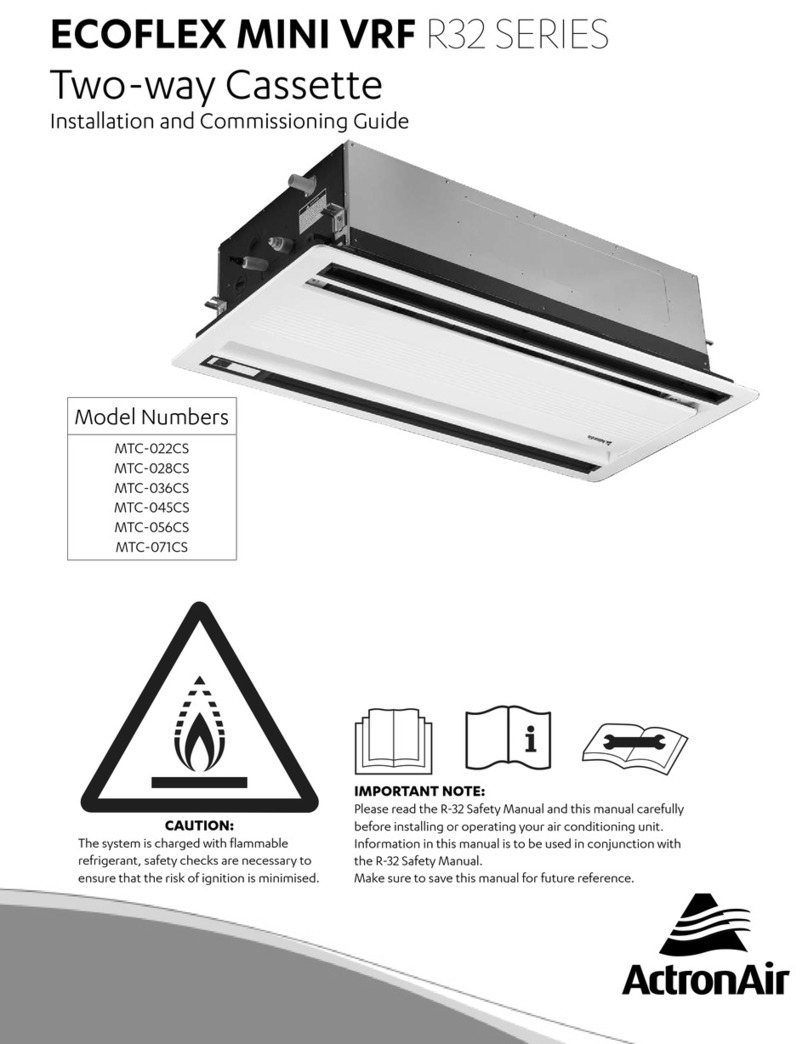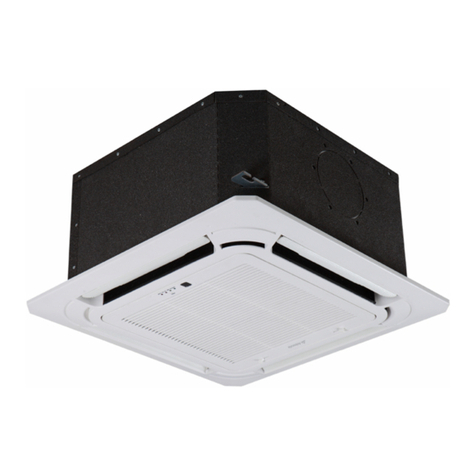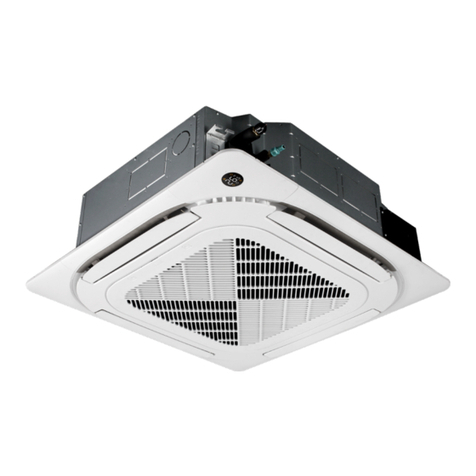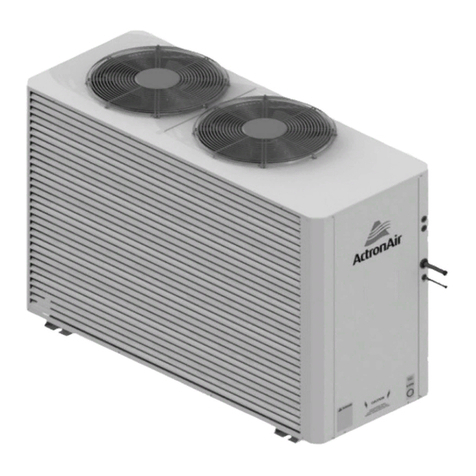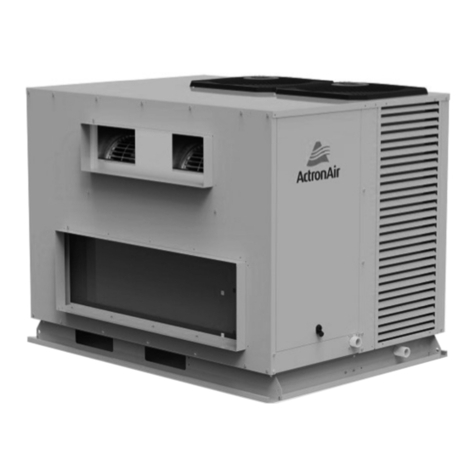
Page 7
CAUTION
Do Not Use High Alkaline Detergent!
• When using detergent for coil cleaning, ensure that
the alkaline level is no higher than 8.5 pH level, which
can cause corrosion damage to the coils.
• Be Careful Not to Spray Water into the Electrical
Components!
DANGER
Live Electrical Connections!
It may be necessary to work with live electrical
components on certain maintenance tasks. Only qualified
technicians are allowed to perform these tasks.
DANGER
Beware of Rotating Fan Blades!
• Always make sure that all power supply, to the
Outdoor Fans are turn-off and isolated.
• Observe WH&S safety procedures, do not wear loose
clothing and any jewellery when working near the
fans.
• Wear PPE whenever performing any maintenance
procedures.
• Observe all necessary procedures when working in a
confined space.
WARNING
Hazardous Voltage!
Always make sure that all power supply, including
remote controls, are disconnected before performing
maintenance. Observe proper Lock-Out / Tag-Out
procedures to ensure that power cannot be inadvertently
energised. Failure to disconnect power before maintenance
procedures can result in serious injury and/or death.
Maintenance Procedures
This section describes the procedures that must be
performed as a part of normal maintenance program.
Regular servicing of equipment by qualified HVAC
technician is highly recommended. Always disconnect
electrical power to the unit before performing these
procedures. It is always a safe practice to observe all safety
warnings and cautions when conducting maintenance
tasks.
Annual Maintenance Checklists
• Perform general maintenance inspections.
• Perform scheduled start-up checks.
• Leak test refrigerant circuits.
• Inspect contacts of all contactors and relays. Replace
all worn contacts as required.
• Inspect, clean and tighten all electrical connections.
• Check fans for balanced operation. Make sure that
there are no loose screws / bolts, no fan blades
interference and no damage to the fans and guards.
• Inspect the air filters, clean or replace as required.
• Clean and repaint any corroded panel section.
• Ensure no blockage of airflow through variable speed
drive and drive fan is operating correctly.
Coil Cleaning Procedures
• Disconnect power to the unit by following correct tag
out procedure.
• Remove the louvered panels from the unit to gain
access to the air inlet side of the coils.
• Use a soft brush to remove loose dirt and debris from
both sides of the coils.
• Straighten bent coil fins with fin comb.
• Prepare the detergent solutions according to the
manufacturer’s instructions.
• Spray solution at a 90oangle to the coils, keeping
a minimum nozzle spray angle of 15o, with at least a
1800mm distance from the coils and 600psi pressure.
• Spray leaving air side of the coils first then the air inlet
side. Allow the solution to stand on the coils for five
minutes.
• Rinse both sides of the coils with cool clean water.
• Inspect the coils, if they are still dirty, repeat the
cleaning procedure.
• Clean and wipe dry the outer and inner sides of the
unit, the refrigerating parts and other components.
• Ensure that the condensate drain lines are not blocked.
• Reinstall all unit panels, covers and guards.
• Restore electrical power to the unit.
Cleaning The Condenser Coils
Clean the coils at least once a year or more frequently if
unit is located in a dusty and dirty environment, in order
to maintain your system’s proper operating performance.
High discharge pressures are a good indication that the
coils need cleaning. When using detergent or solvents to
clean the coils, follow the manufacturer’s instructions to
avoid potential damage to the coils and to the unit.
To clean the refrigerant coils, use a soft brush and water
spray, such as garden hose or pressure washer with low
pressure nozzle.
3. Care and Maintenance Low Profile Split Ducted Air Conditioner

